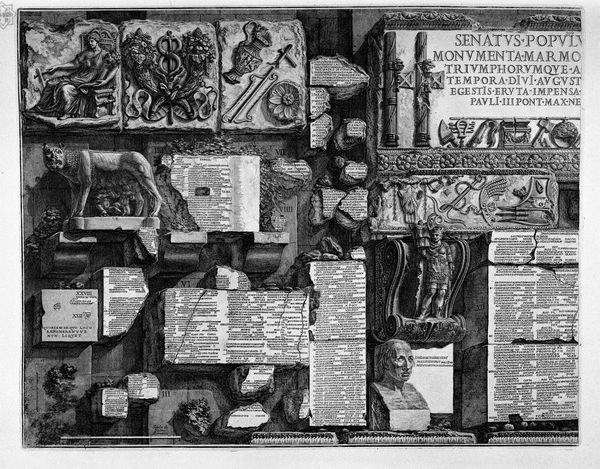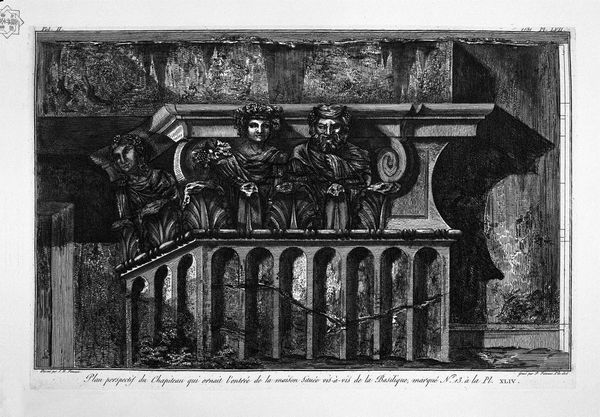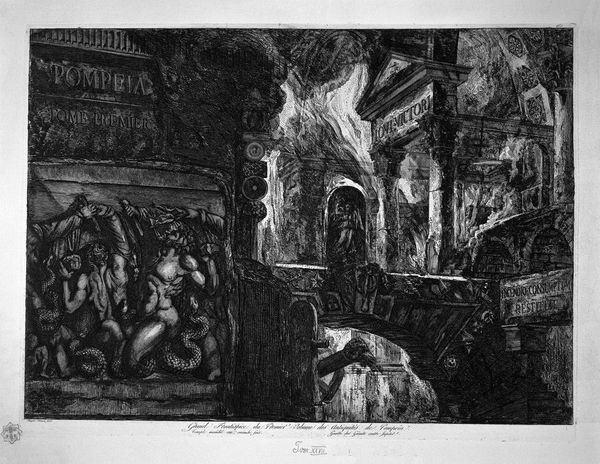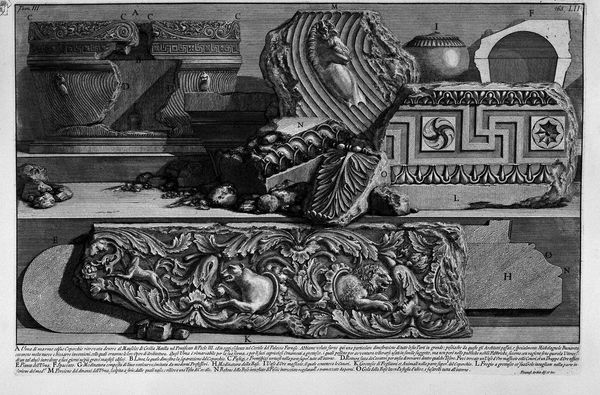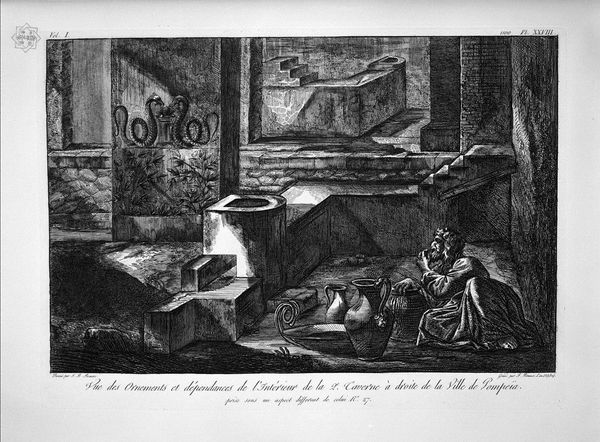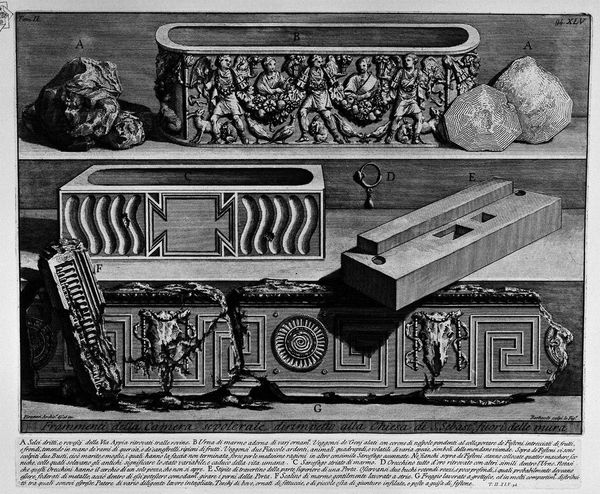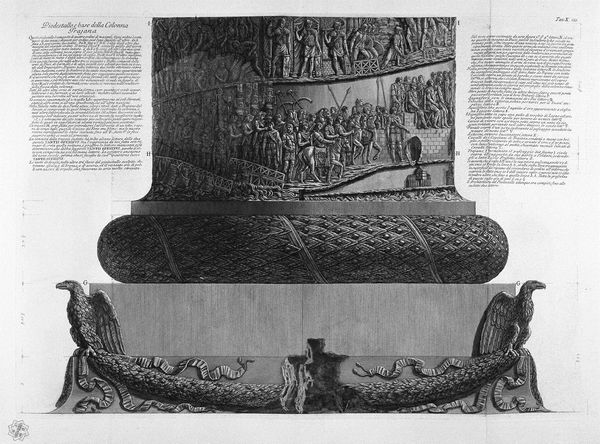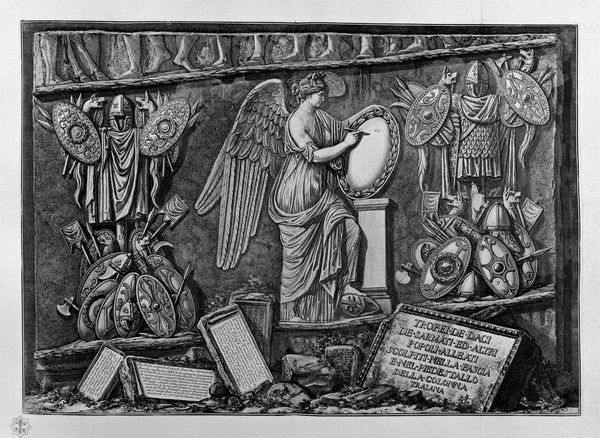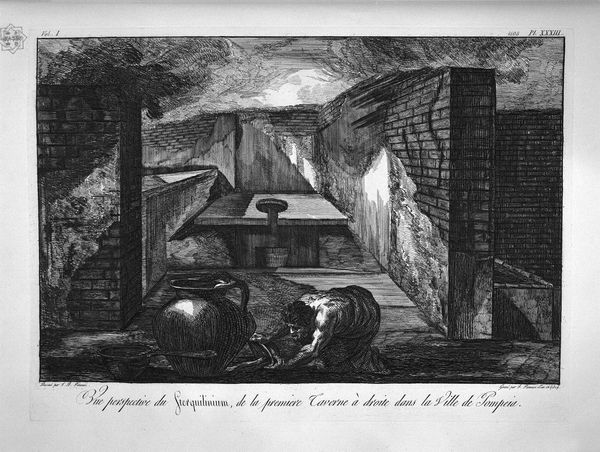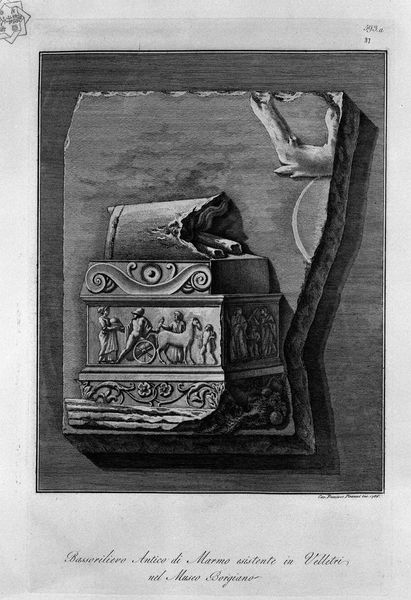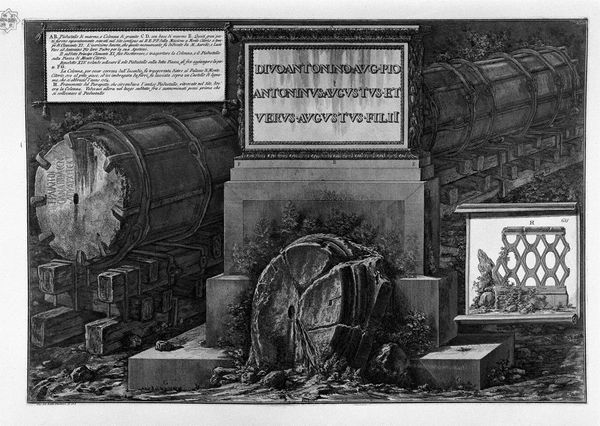
print, etching, engraving
#
neoclacissism
# print
#
etching
#
landscape
#
geometric
#
ancient-mediterranean
#
cityscape
#
history-painting
#
engraving
Copyright: Public domain
This print, "Interior view of the city of Pompeii with side porches," was made by Giovanni Battista Piranesi in the 18th century using etching. As with all prints, the final image relies on a whole chain of actions. First, the artist would have painstakingly rendered the composition in reverse onto a metal plate coated with wax, then, acid would have bitten into the exposed lines. This plate, essentially a matrix, was then inked and pressed onto paper. We see in Piranesi’s composition, the way in which his own labor is in conversation with the labor of ancient stone masons; each inscription is carefully rendered. The print medium itself is critical here. It allowed Piranesi to disseminate images of antiquity widely, at relatively low cost. Pompeii was a hot topic at the time, and prints like this fueled a growing market for antiquities, and Piranesi was catering to this surge of interest. Paying attention to the material history of printmaking helps us to understand how knowledge about the past was produced, consumed, and commodified in Piranesi's time.
Comments
No comments
Be the first to comment and join the conversation on the ultimate creative platform.
